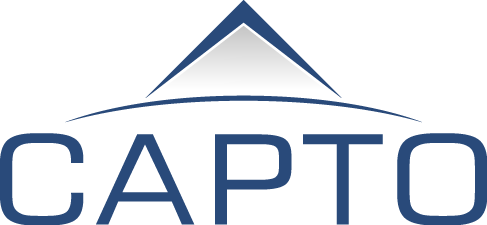Harvesting the Ecosystem: Another Synaptic Shift for Better Outcomes
As part of our SYNAPTIC approach, we at CAPTO do something we refer to as “harvesting the ecosystem.” It’s a way of developing the best solutions for our clients that is related to Joy's Law—the principle that "no matter who you are, most of the smartest people work for someone else,” which has been attributed to Sun Microsystems co-founder Bill Joy. For CAPTO the genesis of this idea goes back even further than Bill Joy.
Early in my career, when I was working at McKesson, the vice president of his division told him that there is no way to know everything, so the division should leverage their partners to get as much as possible from them. For McKesson this approach was founded in necessity – at the time a very low margin business which simply could not rely on investment to drive innovation. Later, Larry Huston at brought this concept to Procter & Gamble. As vice president of R&D Innovation and Knowledge, Huston had been given a lofty goal by CEO A. G. Lafley—source 50% of the company’s innovation externally.
Larry Huston and Nabil Sakkab explained the strategy in the Harvard Business Review (http://hbswk.hbs.edu/archive/5258.html):
We knew that most of P&G's best innovations had come from connecting ideas across internal businesses. And after studying the performance of a small number of products we'd acquired beyond our own labs, we knew that external connections could produce highly profitable innovations, too. Betting that these connections were the key to future growth, [Proctor & Gamble CEO A. G.] Lafley made it our goal to acquire 50 percent of our innovations outside the company. The strategy wasn't to replace the capabilities of our 7,500 researchers and support staff, but to better leverage them. Half of our new products, Lafley said, would come from our own labs, and half would come through them.
At McKesson I learned to effectively work the relationships with the supplier-partners to produce very positive results. We had a very symbiotic relationship, McKesson got tremendous leverage, producing industry leading results and our partners received our loyalty, and unbelievable support from McKesson in the marketplace.
We carried that thinking forward into what we today call the SYNAPTIC approach to harvesting the ecosystem.
Stepping through the SYNAPTIC Approach
What we do in the beginning of each of our engagements is to frame the problem, which includes understanding root cause of client’s problems. Then we start the process of soliciting ideas, combining the client’s thinking, vendor thinking, related academic research, and industry-accepted best practices. We collect all of this data and then apply our proprietary SYNAPTIC tools, methodology, and know-how to extract, harvest, refine, and ultimately develop a well-thought-out, optimal strategy and solution that solves the problem at hand.
An example of the SYNAPTIC approach to harvesting ideas can be found in our SYNAPTIC Sourcing Selection [link to post] piece. It describes the use of a qualifications questionnaire which serves as a two-way communications tool, providing as much information about the client as we seek to acquire from the candidate. Based on the responses, we invite a short list of candidates to present their responses in interactive, 60–90 minute sessions with the client and CAPTO in attendance. We have been able to identify the ideal partners for our clients using this methodology.
Better Outcomes Start with Better Processes & Smarter Thinking
About two years ago, we were thinking about redesiging our company logo. We are experts in a lot of things, but graphic design is not our strong suit.
We came upon a website (logotournament.com) which guided us through a process where we were able to see some amazing creativity and thinking from some thirty graphic designers from across the world. We submitted a brief description of our company along with some themes we liked, and in less than thirty-six hours we had hundreds of interesting logos to choose from.
Our method of harvesting the ecosystem works for all different problem sets and for companies of any size, ranging from firms the size of CAPTO to Fortune 50 companies like P&G. And the results are substantial and sustainable. Ten years later, the P&G's Connect + Develop (http://www.pgconnectdevelop.com) program mentioned earlier in this piece, is still going strong.
It is clear that having the ability to extract the “best of the best” ideas leads to better outcomes. That’s why we’ve incorporated it as part of our SYNAPTIC thinking.
